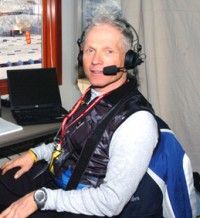![Jack Sasseville [P] Pam Doyle](http://skitrax.com/wp-content/uploads/2012/12/Jack-Sasseville-P-Pam-Doyle.jpg) December 05, 2012 – The World Cup passed through its second stop of the season at Ruka, which is just outside of Kuusamo in Finland, this past weekend and this is what I think I know after the three races that took place there:
December 05, 2012 – The World Cup passed through its second stop of the season at Ruka, which is just outside of Kuusamo in Finland, this past weekend and this is what I think I know after the three races that took place there:
– Marit Bjoergen and Petter Northug are the best skiers in the world right now. Bjoergen dominated winning all three races and is undefeated on the season in the World Cup. This comes on the heels of some talk in the Norwegian press that she was losing a step after having been beaten in some early season races. Northug did not win any of the races on the weekend – he was 2nd in the sprints to Russian Nikolai Kriukov and 2nd again to another Russian, Alexandr Legkov in the 10 km but he won the overall sprint at the end of the third race from another Russian, Maxim Vylegzhanin. He is now leading the World Cup overall.
– The Russian team is ramping it up in preparation for the Olympics in Sochi in 2014. In addition to the above mentioned men’s results they had 5 men finish in the top 10 overall at the end of the three days and that did not include their sprinters like Kriukov. The Russian women’s team is also getting better and better with Julia Tchekaleva 3rd in the 5km and Evgenia Shapovalova 2nd and Anastasia Dotsenko 3rd in the sprints.
– Justina Kowaczyk (POL) is still the 2nd best female skier in the world. She is starting to round into form after a very hard summer and fall of training and she finished 2nd to Bjoergen overall at the end of the weekend. She will be a force in the Tour de Ski after Xmas for sure.
– Kikkan Randall is the real deal in distance racing with a second podium finish in the 5km. It is interesting that she is doing better in distance than in sprints so far this season. She will challenge Bjoergen, Kowalczyk and Terese Johaug of Norway for the overall World Cup this year.
– The rest of the American women are also the real deal. Ida Sargeant had a career best 9th in the sprints and joins Kikkan, Holly Brooks, Liz Stephen and Jessie Diggins to make up one of the strongest women’s teams in the world right now. They should do very well in the Canadian World Cups over the next two weeks.
– Perianne Jones (12th)and Dasha Gaiasova (14th) had great sprint races but continue to struggle in distance races. Chandra Crawford is struggling everywhere and needs to get it together quickly if she is going to race well at home in Canada.
– Devon Kershaw and Alex Harvey are starting to come out of their funk. Both had decent results over the weekend but it is nothing like how they finished the year last year. The pressure is on to perform in Canada, especially for Harvey in his hometown this weekend in Quebec City. I wonder what they will do?
– Noah Hoffman is starting to shine. As a junior he had a great engine but poor technique but it seems that he is starting to put it all together. Last year he was a medalist at the World U23 games and his 19th place in the 10km and 26th place overall shows big improvement over last year. The other men on the US team are still back in the pack and need to pick it up soon.
– Many of the top skiers will not be coming to Canada for the World Cups. Marit Bjoergen and Petter Northug stated after the races in Ruka that they would not attend. The Finnish team will only send 5 sprinters to Quebec City, but will send more to the distance races in Canmore including Aino-Kaisa Saarinen. This means that there will be more World Cup points available for North American skiers, as the fields will be diluted.
– Having World Cups in Canada is also a great opportunity for younger, less experienced North American skiers to show what they can do against the best. Careers can be jump started by having a great race over the next two weeks. These are the skiers that I will be watching closely. Now is the time for them to get on the “escalator” that will take them to Sochi in 2014. By skiing well now they will get more opportunities to ski at this level later on in the year which will give them more chances to qualify for their National Teams and for their Olympic Teams. It will be very hard for skiers who are not on the escalator now to make it to Sochi next year.
– All of the Canadian races will be shown on either CBC or Bold over the next three weeks. Consult your local listings for time and dates and set your PVR – there is going to be some great racing!






![Jack Sasseville [P] Pam Doyle](http://skitrax.com/wp-content/uploads/2011/11/Jack-Sasseville.32-200x218.jpg)
![Jack Sasseville [P] Laura Robinson](http://skitrax.com/wp-content/uploads/2011/02/Jack-Sasseville.jpg)
![Jack Sasseville [P] Laura Robinson](http://skitrax.com/wp-content/uploads/2011/01/Jack-Sasseville.31-200x218.jpg)
![Jack Sasseville [P] skitrax.com](http://skitrax.com/wp-content/uploads/2011/01/Jack-Sasseville-3-DSC01290-200x266.jpg)
![Jack Sasseville [P] Laura Robinson](http://skitrax.com/wp-content/uploads/2010/12/Jack-Sasseville.3-200x218.jpg)